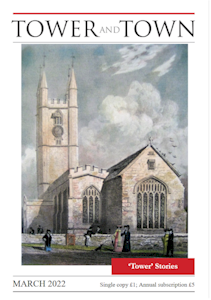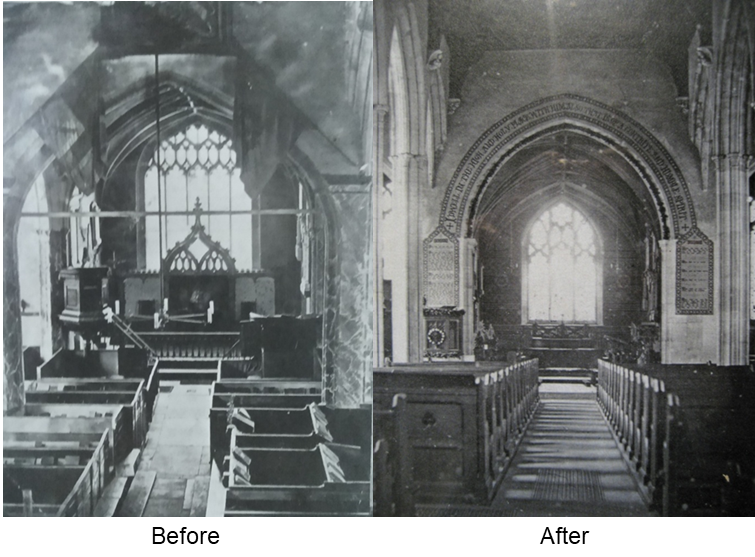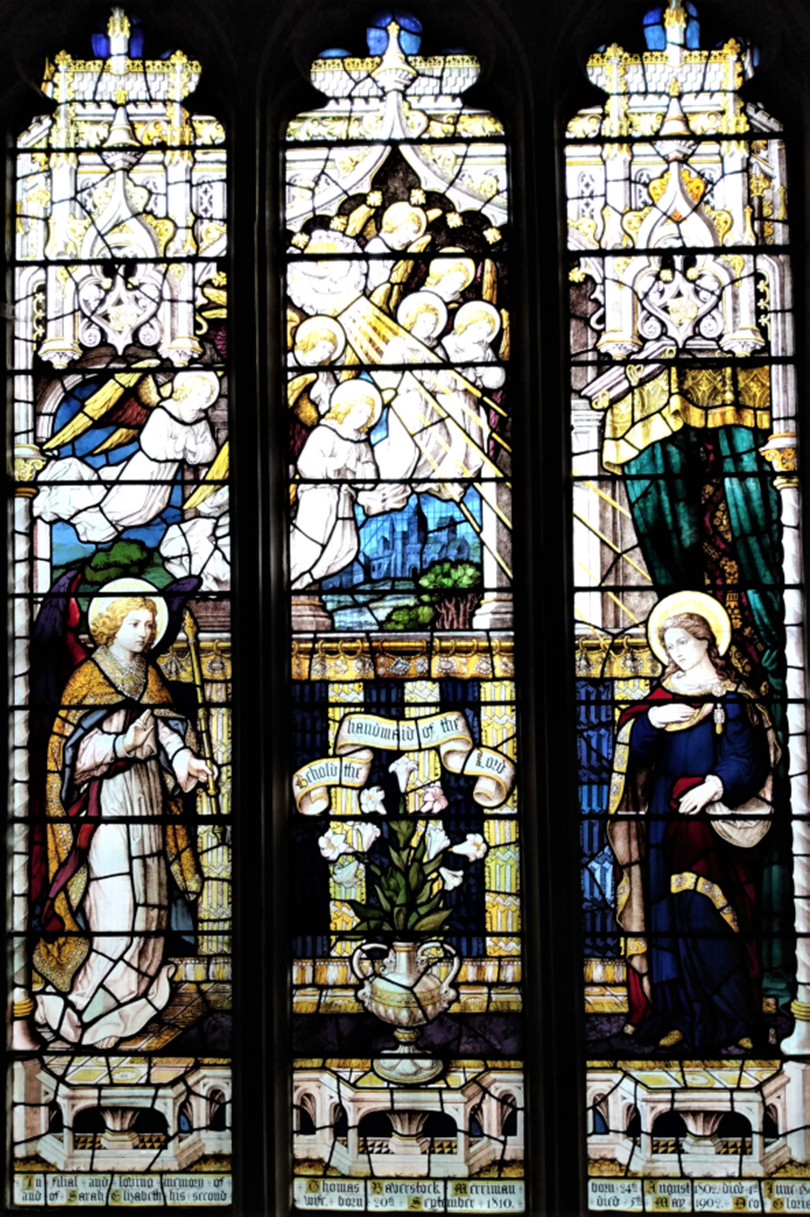

Tower and Town, March 2022 (view the full edition) (view the full edition)St Peter's ChurchSt Peter's church, despite being redundant, has a richer history than almost any other building in town. The Norman church with its close association with the castle, or the mid-15th century rebuild, would each warrant an article all to itself. But if you want to understand why the church you see today looks as it does, you need to focus on the mid-19th century and the Victorian restoration managed by the Revd Townley Ward Dowding, and designed by the diocesan architect, Thomas Henry Wyatt. Dowding and Wyatt had already worked together on the restoration of St George's in Preshute where Dowding had been vicar before taking up the post of Rector of Marlborough in 1859. When Dowding arrived in Marlborough he found his church in a parlous state: the roof was rotten and leaking; some of the stonework was structurally unsound; the high Georgian box pews were damp and uncomfortable and took up too much space. Within three years Dowding set about raising the money needed to rectify these problems. 
The work started in 1862 and cost in the region of £3,000, a huge sum in those days. The main changes included the removal of the gallery at the west end of the nave, the removal of the old barrel-shaped roof and raising the pitches of the nave and aisle roofs, and the narrowing of both the east window and the chancel arch to strengthen the structure of the building. The old pews were stripped out, the lectern and pulpit replaced, and the font installed in the baptistry. The completion of the restoration one year later was a great event. The Marlborough Times noted: 'Thursday was altogether a day unparalleled in the history of Marlborough. The announcement that the Church would be re-opened on the 25th was hailed with unfeigned joy and satisfaction.' Over the next ten years new stained glass windows were installed by Lavers and Barraud, glass which still today frequently delights visitors to the church, and a large new organ placed on the north side of the chancel. But this was only half of what the Rector had in mind for his refurbished church. One of the other things that visitors comment on today is the extent and strength of the decoration in the chancel. This is unusually rich and full of religious symbolism. There is little doubt that the overall decorative scheme in the chancel was commissioned by the rector. Dowding had been an undergraduate at Oxford in the 1840s when the university was riven apart by the rise of the Oxford Movement, the Tractarians. This movement gave rise to ritualism and consequently a revival of pre-Reformation liturgy and furnishings in churches. Dowding was undoubtedly influenced by this as the decoration of the chancel walls shows with its consecration crosses and liturgical symbols all shown in painted medallions.  The crosses have their origin in medieval times. When a bishop consecrated a church he would mark several places in or outside the building with a cross, dipping his fingers in chrism consecrated at Easter. A mason or a painter would then mark these places permanently with symbols such as these which we find in St Peter's:  In addition the sanctuary, the area at the very east end of the church around the high altar where only the priests could be, was also decorated with symbols of greater liturgical significance, as in the case of the three medallions from St Peter's shown below. The first shows a cross with sprouting leaves. There is the spear which pierced the dead Christ's side, and the sponge filled with vinegar which he refused to drink. The foliage around the cross may be a reference to the resurrection - the dead wood of the cross bursting back into life. The second contains a cross of nails and the crown of thorns. The four nails in the shape of a cross are the nails which fixed Christ's hands and feet to the cross. The Roman soldiers who carried out the crucifixion mocked Christ as the King of the Jews by crowning him with a 'crown' made of thorn twigs. The third medallion refers to the incident in St Mark's gospel where the Roman soldiers took Christ's clothes after they had nailed him to the cross, and threw dice to claim them. All of this highly symbolic decoration is very much in tune with Dowding being a product of the Oxford Movement. It marks the completion of his restoration of St Peter's, and has left us today with a legacy that throws light onto that worshiping community about 150 years ago.  David Du Croz |